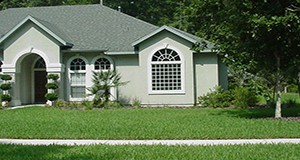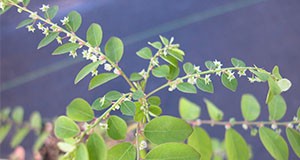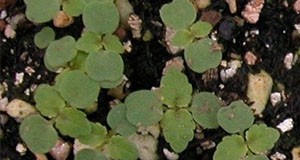A chilling temperature is any temperature that is cold enough to cause plant injury but not cold enough to freeze the plant. Chilling injury can occur to tropical foliage plants if greenhouses become too cold or if plants are exposed to chilling temperatures outside of the greenhouse during packing and shipping. Dieffenbachia, commonly known as dumb cane, ranks among the top five most popular foliage plant genera produced and sold in the United States. This four-page fact sheet describes the chilling temperatures of Dieffenbachia cultivars in order to assist growers to better manage greenhouse temperatures. Written by Jianjun Chen and published by the Environmental Horticulture Department.
http://edis.ifas.ufl.edu/ep530
Category: Nursery & Greenhouse
Texas Phoenix Palm Decline
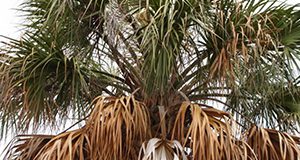
Texas Phoenix palm decline is a new disease in Florida, caused by an unculturable bacterium. It is a fatal, systemic disease that kills palms relatively quickly. This six-page fact sheet explains the pathogen and hosts of TPPD, its symptoms, how to diagnose it, and provides disease management practices. Written by Nigel A. Harrison and Monica L. Elliott and published by the Plant Pathology Department.
http://edis.ifas.ufl.edu/pp163
Consumers' Response to "Neonic-Free" and Other Insect Pollinator Promotions on Ornamental Plants
Pollinator insects are essential to world food crop production, the economy, and the environment. Neonicotinoid (neonic) insecticides are facing intense backlash from environmental groups because the systemic protection they provide throughout the plant, including the pollen and nectar, may be injuring pollinator insects and causing their population decline. But many nursery and greenhouse growers use neonic-based pesticide control measures because they are effective, inexpensive, and cause less environmental damage than other insecticides. The increased publicity may influence consumer demand and preferences but very few studies have investigated consumer responses to neonic-free labels, and evidence suggests that many consumers have little knowledge or awareness of the issue. This 3-page fact sheet describes the results of a the study investigating how consumers’ awareness of neonic insecticides influenced their preferences and purchasing behavior for plants and exploring the marketing potential of using alternate pollinator promotions (besides neonic-free) in garden center retail outlets. Written by Hayk Khachatryan and published by the Food and Resource Economics Department.
http://edis.ifas.ufl.edu/fe991
Consumer Perceptions of Lawn Fertilizer Brands
Widespread urbanization in the United States has increased the number of lawns. A healthy lawn provides many benefits, including urban heat dissipation, water quality protection, erosion control, carbon sequestration, community safety, aesthetics, and property value growth. Many homeowners maintain their healthy lawns by applying fertilizers throughout the growing season, but excess fertilizer runoff and leaching have received much attention recently because of waterway pollution and algae blooms, leading many states to place restrictions on what chemicals can be used in lawn fertilizers.
Consumers’ increased environmental awareness creates a niche opportunity for the fertilizer industry to promote environmentally friendly lawn fertilizers, but in order to effectively exploit it, industry stakeholders must understand consumer purchasing behavior before expending labor, time, and money creating products for sale. The following 3-page report written by Hayk Khachatryan, Alicia Rihn, and Michael Dukes and published by the Food and Resource Economics Department covers research methodology and the existing brand awareness and selection of consumers in the lawn fertilizer industry. It also discusses homeowners’ preferences for certain fertilizer attributes. Consumer awareness, selection, and attribute preferences indicate existing behavior, and understanding existing behavior assists in the development of effective marketing programs, promotional strategies, and policies.
http://edis.ifas.ufl.edu/fe990
Leafy Greens in Hydroponics and Protected Culture for Florida

Leafy greens are some of the top “powerhouse” fruits and vegetables. They are also becoming increasingly more popular for consumers. This seven-page fact sheet is designed to aid Florida hydroponic and/or other protected culture growers who are seeking appropriate cultivars of the leafy greens group. The article covers spinach, Swiss chard, kale, collard greens, mustard greens, and Asian greens. Written by Natalie B. Parkell, Robert C. Hochmuth, and Wanda L. Laughlin and published by the Horticultural Sciences Department.
http://edis.ifas.ufl.edu/hs1279
Florida Consumer Preferences for Fruit-Producing Plant Attributes
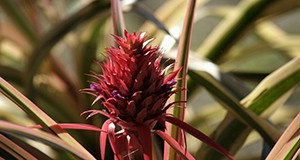
This 4-page report from the Food and Resource Economics Department and the UF/IFAS Mid-Florida Research and Education Center compares the effects of plant type, price, production method, and origin attributes on consumer preferences for fruit-producing plants. Authors Hayk Khachatryan and Alicia Rihn present the results of a survey of Florida plant consumers conducted in June and July of 2014 to rate their likelihood of purchasing plants with various attributes, reporting that production methods do indeed directly influence consumers’ preferences for fruit-producing plants. The article describes the implications for the environmental horticulture industry and provides suggestions for growers and retailers to more effectively market their plants.
http://edis.ifas.ufl.edu/fe981
Monitoring Leaching Fraction for Irrigation Scheduling in Container Nurseries

Scheduling irrigation in container nurseries can be a daunting task for producers. There is a great risk of under- or over-watering. The leaching fraction (LF) test is a valuable tool for measuring the volume of container drainage collected during irrigation relative to the volume of water entering the container. With this test, producers can adjust their irrigation to maintain a low percentage of leaching. This four-page fact sheet explains how to perform the test, gives example calculations, and provides some suggestions on how to utilize LF testing when managing irrigation. Written by Jeff Million and Tom Yeager, and published by the Environmental Horticulture Department.
http://edis.ifas.ufl.edu/ep529
Weed Control for Ornamentals inside Greenhouses and Other Enclosed Structures
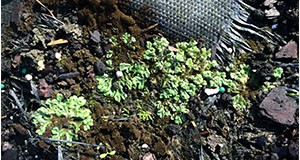
Maintaining a weed-free greenhouse is important for producing healthy and marketable crops. Weeds will compete with crops for water, light, and nutrients. Weeds can find favorable conditions for growth in gravel and along edges, tears, and worn areas of ground cloth. It is important to frequently scout for weeds. This five-page fact sheet describes both chemical methods of controlling weeds, but also non-chemical methods, such as sanitation and prevention, hand weeding, and cultural control practices. Written by Chris Marble and Jeremy Pickens, and published by the Environmental Horticulture Department.
http://edis.ifas.ufl.edu/ep528
Water and Nutrient Management Guidelines for Greenhouse Hydroponic Vegetable Production in Florida
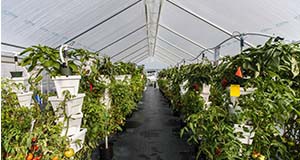
Many small farms are implementing greenhouse hydroponic systems. Perhaps the most challenging aspect of crop management for smaller growers is the control of water and nutrient delivery in a soilless media system. This six-page fact sheet focuses on relatively inexpensive strategies to help small growers know both when to start irrigation events and how long to run a single event when growing in soilless media. Written by Robert C. Hochmuth, Natalie B. Parkell, Wanda L. Laughlin, and Sean C. Rider, and published by the Horticultural Sciences Department.
http://edis.ifas.ufl.edu/hs1274
Sizzle and Passionista: Two New Lance-Leaved Caladium Cultivars
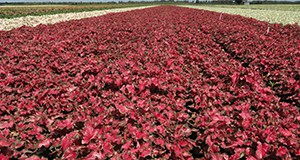 Many lance-leaved cultivars often produce small tubers, making it difficult for growers to produce tubers profitably. ‘Sizzle’ and ‘Passionista’ are two new lance-leaved caladium cultivars with improved tuber yield potential. The availability of ‘Sizzle’ and ‘Passionista’ may expand the color palette for caladium plants desired by greenhouse growers, nurseries, and gardeners. This 7-page fact sheet discusses the cultivars' tuber yield potential, container trials, landscape performance, growing recommendations, and availability. Written by Zhanao Deng, and published by the UF Department of Environmental Horticulture, December 2015.
Many lance-leaved cultivars often produce small tubers, making it difficult for growers to produce tubers profitably. ‘Sizzle’ and ‘Passionista’ are two new lance-leaved caladium cultivars with improved tuber yield potential. The availability of ‘Sizzle’ and ‘Passionista’ may expand the color palette for caladium plants desired by greenhouse growers, nurseries, and gardeners. This 7-page fact sheet discusses the cultivars' tuber yield potential, container trials, landscape performance, growing recommendations, and availability. Written by Zhanao Deng, and published by the UF Department of Environmental Horticulture, December 2015.
http://edis.ifas.ufl.edu/ep527
Biology and Management of Graceful Sandmat (Chamaesyce hypericifolia) in Ornamental Crop Production
Graceful sandmat (Chamaesyce hypericifolia) is a problematic weed that often grows in container media in ornamental plant nurseries. This 4-page facts sheet profiles the biology of graceful sandmat and recommends physical, cultural, and chemicals methods for managing the weed in the nursery environment. Written by Theresa Chormanski, Chris Marble, and Lyn Gettys, and published by the UF Department of Environmental Horticulture, June 2015.
http://edis.ifas.ufl.edu/ep522
Vespiform Thrips Franklinothrips vespiformis Crawford (Insecta: Thysanoptera: Aeolothripidae)
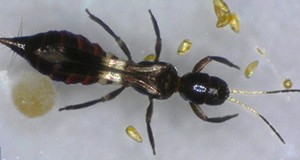
Franklinothrips vespiformis Crawford is a predatory thrips with a pantropical distribution. The distinctive red, humped-back larvae and fast-moving ant-like adults are predaceous on small arthropods. In addition to being easily mistaken for an ant, this beneficial thrips is unusual in that it constructs a silken cocoon within which it pupates. Males of this species are rare. This species is sold for use as a biological control agent in botanical gardens, zoos, interior landscapes, research greenhouses, nurseries with ornamental plants as well as outdoors in subtropical regions. This 4-page fact sheet was written by Runqian Mao, Yingfang Xiao, and Steven P. Arthurs, and published by the UF Department of Entomology and Nematology, March 2015. (Photo credit: Runqian Mao, UF/IFAS)
http://edis.ifas.ufl.edu/in1083
Black Scale Saissetia oleae (Olivier, 1791) (Insecta: Hemiptera: Coccoidea: Coccidae)
 The black scale is an important pest of citrus and olive trees. Originally from South Africa, this scale is now distributed worldwide. In Florida, black scale is found on citrus, cultivated olive, avocado, and many popular landscape plants. It is likely that black scale, like many invasive pests, was imported to the United States on infested nursery plants. Based on their small size and the unique life history of scale insects, these insects are difficult to detect and control. This 4-page fact sheet was written by Morgan A. Byron, Jennifer L. Gillett-Kaufman, and Sandra A. Allan, and published by the UF Department of Entomology and Nematology, March 2015. (Photo credit: Lyle Buss, UF/IFAS)
The black scale is an important pest of citrus and olive trees. Originally from South Africa, this scale is now distributed worldwide. In Florida, black scale is found on citrus, cultivated olive, avocado, and many popular landscape plants. It is likely that black scale, like many invasive pests, was imported to the United States on infested nursery plants. Based on their small size and the unique life history of scale insects, these insects are difficult to detect and control. This 4-page fact sheet was written by Morgan A. Byron, Jennifer L. Gillett-Kaufman, and Sandra A. Allan, and published by the UF Department of Entomology and Nematology, March 2015. (Photo credit: Lyle Buss, UF/IFAS)
http://edis.ifas.ufl.edu/in1082
An ambrosia beetle Xyleborus affinis Eichhoff, 1868 (Insecta: Coleoptera: Curculionidae: Scolytinae)
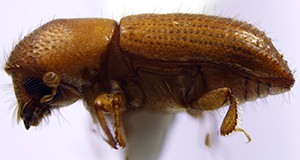 Xyleborus affinis is one of the most widespread and common ambrosia beetles in the world. It is also very common in Florida. Like other ambrosia beetles, it bores tunnels into the xylem of weakened, cut or injured trees and farms gardens of symbiotic fungus for food. Females lay eggs in the fungus-lined galleries and larvae feed exclusively on the fungi. Recent studies have shown that Xyleborus affinis can vector the fungus responsible for laurel wilt disease, which is lethal to numerous species of trees in the Lauraceae family. This 5-page fact sheet was written by Lanette Sobel, Andrea Lucky, and Jiri Hulcr, and published by the UF Department of Entomology and Nematology, June 2015. (Photo credit: Juri Hulcr, UF/IFAS)
Xyleborus affinis is one of the most widespread and common ambrosia beetles in the world. It is also very common in Florida. Like other ambrosia beetles, it bores tunnels into the xylem of weakened, cut or injured trees and farms gardens of symbiotic fungus for food. Females lay eggs in the fungus-lined galleries and larvae feed exclusively on the fungi. Recent studies have shown that Xyleborus affinis can vector the fungus responsible for laurel wilt disease, which is lethal to numerous species of trees in the Lauraceae family. This 5-page fact sheet was written by Lanette Sobel, Andrea Lucky, and Jiri Hulcr, and published by the UF Department of Entomology and Nematology, June 2015. (Photo credit: Juri Hulcr, UF/IFAS)
http://edis.ifas.ufl.edu/in1094
Commercial Production of Ornamental Tropical Foliage Plants: Micropropagation
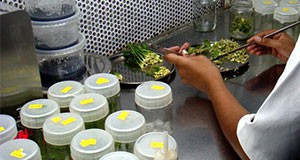 Florida nursery operators need to understand plant propagation principles and techniques so they can grow enough plants for sale. Micropropagation is a way to culture plant tissue to rapidly propagate a large number of plants. This 4-page fact sheet presents an overview of micropropagation to help growers evaluate it as a propagation technique for their own nursery operations. Written by J. Chen and R. J. Henny, and published by the UF Department of Environmental Horticulture, May 2015. (Photo: J. Chen, UF/IFAS)
Florida nursery operators need to understand plant propagation principles and techniques so they can grow enough plants for sale. Micropropagation is a way to culture plant tissue to rapidly propagate a large number of plants. This 4-page fact sheet presents an overview of micropropagation to help growers evaluate it as a propagation technique for their own nursery operations. Written by J. Chen and R. J. Henny, and published by the UF Department of Environmental Horticulture, May 2015. (Photo: J. Chen, UF/IFAS)
http://edis.ifas.ufl.edu/ep520
Biology and Management of Long-Stalked Phyllanthus in Ornamental Crop Production
This 5-page fact sheet discusses the characteristics of long-stalked phyllanthus and explains how to control its growth in a nursery environment. Written by Theresa Chormanski, Chris Marble, and Lyn Gettys, and published by the UF Department of Environmental Horticulture, April 2015.
http://edis.ifas.ufl.edu/ep518
Biology and Management of Mulberry Weed (Fatoua villosa) in Ornamental Crop Production
This 4-page fact sheet discusses the characteristics of mulberry weed (Fatoua villosa) and explains how to control its growth in a nursery environment. Written by Chris Marble and Shawn Steed, and published by the UF Department of Environmental Horticulture, April 2015.
http://edis.ifas.ufl.edu/ep517
Rose Rosette Disease: A New Disease of Roses in Florida
Rose rosette disease is an incurable, destructive disease that affects both wild and cultivated roses. Over the past several decades, the disease has spread over much of the U.S., though it was first observed in Florida in 2013. This 6-page fact sheet describes the symptoms and diagnosis of the disease, as well as the cultural, chemical, and, possibly, biological controls that can minimize its spread. Written by Binoy Babu, Mathews L. Paret, Tim Schubert, Carlye Baker, Gary Knox, Fanny Iriarte, James Aldrich, Laura Ritchie, Carrie L. Harmon, and Svetlana Y. Folimonova, and published by the UF Department of Plant Pathology, May 2015.
http://edis.ifas.ufl.edu/pp317
Butia odorata: Pindo Palm
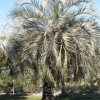 The pindo or jelly palm is a small, single-stemmed, feather-leaved palm widely grown in warmer parts of the US due to its unusual cold tolerance. It is considered hardy down to about 10°F (USDA zone 8A). The palm is slow-growing, eventually reaching 15 to 20 feet, making it suitable for planting under power lines. This 2-page fact sheet was written by Timothy K. Broschat, and published by the UF Department of Environmental Horticulture, February 2014.
The pindo or jelly palm is a small, single-stemmed, feather-leaved palm widely grown in warmer parts of the US due to its unusual cold tolerance. It is considered hardy down to about 10°F (USDA zone 8A). The palm is slow-growing, eventually reaching 15 to 20 feet, making it suitable for planting under power lines. This 2-page fact sheet was written by Timothy K. Broschat, and published by the UF Department of Environmental Horticulture, February 2014.
http://edis.ifas.ufl.edu/st105
Floridian Consumer Perceptions of Local versus Organic Ornamental Plants
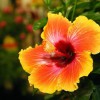 Horticultural consumers in Florida are interested in local and organically produced plants. But these terms can mean different things in different regions. UF/IFAS researchers conducted a survey last summer which suggests that consumers in central Florida define local as plants that are grown near where they are sold and identify the most important local benefits as product safety, quality, and community support. Organic plants are perceived as requiring fewer chemical additives and being healthier for the environment. The importance of these traits varies by plant type. This 5-page fact sheet was written by Hayk Khachatryan and Alicia Rihn, and published by the UF Department of Food and Resource Economics, February 2015.
Horticultural consumers in Florida are interested in local and organically produced plants. But these terms can mean different things in different regions. UF/IFAS researchers conducted a survey last summer which suggests that consumers in central Florida define local as plants that are grown near where they are sold and identify the most important local benefits as product safety, quality, and community support. Organic plants are perceived as requiring fewer chemical additives and being healthier for the environment. The importance of these traits varies by plant type. This 5-page fact sheet was written by Hayk Khachatryan and Alicia Rihn, and published by the UF Department of Food and Resource Economics, February 2015.
http://edis.ifas.ufl.edu/fe964


